 The people that lived on Pershing Avenue all knew each other. This was pretty typical in Rockford in 1961. It was a different city back then. People knew and looked out for their neighbors. So it wasn’t surprising that it was the neighbors who notified the police that they hadn’t seen their neighbors in a few days.
The people that lived on Pershing Avenue all knew each other. This was pretty typical in Rockford in 1961. It was a different city back then. People knew and looked out for their neighbors. So it wasn’t surprising that it was the neighbors who notified the police that they hadn’t seen their neighbors in a few days.
Milford and Ionis Ihlenfield worked from their home breeding dogs. Milford previously worked for a construction business but the couple hit a rough spot in the summer of 1961. Milford lost his job and the financial strain caused the couple to fight almost constantly.
Then in early August of 1961, there was an explosion at the house. Ionis was cooking up some food for the seventeen dogs that they had at the house when the pressure cooker she was using exploded. The fire caused $1500.00 worth of damage to the home. This certainly did not help the couple’s financial situation.
On Monday, August 13 in the evening a neighbor saw Milford outside the home. They chatted for a while about the Ihlenfield’s situation. The neighbor would tell authorities later that Milford seemed to be very upset about losing his driver’s license. He had gotten pulled over and the police officer kept his license because, as Milford told it, he didn’t have car insurance. The men said goodnight and the neighbor was startled when Milford began walking away and suddenly stopped. Milford turned back and said, “There really isn’t any point to go on any longer.”
A short time later the quiet neighborhood was shaken by the sound of a loud argument. They breathed a sigh of relief when the noise finally stopped.
Everything seemed back to normal over the next few days. But then the neighbors noticed that it had been awhile since anyone had since Milford or Ionis. They all knew that the couple owned seventeen dogs. No one had seen them for a few days either. One neighbor questioned another until the whole neighborhood was talking about the couple. Finally, on Friday, August 19 one neighbor realized they had not seen the couple since Monday night.
The authorities were called. They arrived and had to kick in the door to gain access to the home. The first officers that entered were horrified at the sight before them. There was a body lying face down on the floor. There was another, this one a female, lying on the sofa.
The investigation was hampered at first by the dogs that were wandering all over the house. When the house was searched, the officers found one dog dead and the others near death.
The officers received assistance from the Rockford Animal Hospital who sent food for the animals. The dogs were transported to Winnebago County Human Society.
The police questioned neighbors and were able to put together a timeline for the couple. The last time anyone had seen the couple was Monday evening. Coroner Sundberg determined that Milford has shot his wife while she slept on the couch at around 11:00p.m. Then Milford put the shotgun to his own head.
Coroner Sundberg, the police officers, and the North Park Fire Department worked for hours to get the animals delivered to safe lodgings. They also cleaned the house and had the blood spattered furniture removed.
Ionis was laid to rest at Cedar Bluff Cemetery and her grave marked by a nice stone. Milford was also buried there according to the burial records, right next to Ionis. There is, however, no marker for his grave.
Copyright © 2016 Kathi Kresol, Haunted Rockford Events



 Frank Cichella’s life in Rockford was pretty typical for the early 1900s. He wasn’t from Rockford originally. In fact, he wasn’t from the United States. Frank came here when he was 16 years old, leaving his home of Ferentino, Italy. He traveled on the S.S. Re D’Italia from Naples to Philadelphia to live with his brother in 1907. It is not known when and why he came to Illinois, but he was here by 1912. Frank married Mary Fromo in 1912 in Rockford when he was 21.
Frank Cichella’s life in Rockford was pretty typical for the early 1900s. He wasn’t from Rockford originally. In fact, he wasn’t from the United States. Frank came here when he was 16 years old, leaving his home of Ferentino, Italy. He traveled on the S.S. Re D’Italia from Naples to Philadelphia to live with his brother in 1907. It is not known when and why he came to Illinois, but he was here by 1912. Frank married Mary Fromo in 1912 in Rockford when he was 21.
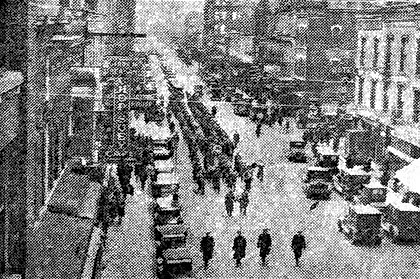

 “Time heals all wounds” is a familiar saying, and while it may work that way for some things, even time can’t heal the wounds that the families of Stan Skridla and Mary Jane Reed have suffered. It has been 66 years since the two young people were found murdered, and while there has been much speculation and many accusations, no one has ever been arrested for the crimes. The only thing the people involved in the investigation can agree on is that on the evening of Thursday, June 24, 1948, these two people were attacked.
“Time heals all wounds” is a familiar saying, and while it may work that way for some things, even time can’t heal the wounds that the families of Stan Skridla and Mary Jane Reed have suffered. It has been 66 years since the two young people were found murdered, and while there has been much speculation and many accusations, no one has ever been arrested for the crimes. The only thing the people involved in the investigation can agree on is that on the evening of Thursday, June 24, 1948, these two people were attacked.
 The Camp Grant Museum and Command Post Restaurant is a treasure trove of interesting history told through actual artifacts of the men and women who served at Camp Grant. It is owned by Stanley and Yolanda Weisensel. They have spent many years scouring the area on a quest to build a memorial to the people who traveled through this area on the way to serve our country in World Wars I and II.
The Camp Grant Museum and Command Post Restaurant is a treasure trove of interesting history told through actual artifacts of the men and women who served at Camp Grant. It is owned by Stanley and Yolanda Weisensel. They have spent many years scouring the area on a quest to build a memorial to the people who traveled through this area on the way to serve our country in World Wars I and II.
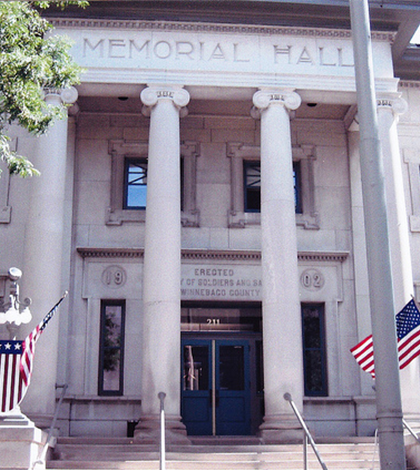 In 1899, the well-known local soldier, Thomas G. Lawler, who was the Commander of the G.A.R. (Grand Army of the Republic), Garret L. Nevius Post No. 1, submitted a petition to the Winnebago County Board. The petition, signed by 200 men, was a request for a building specifically for veterans. This building, named the Veterans Memorial Hall, was finished in 1903. It was the first ever of its kind built in Illinois, and according to some sources, the entire United States. Its purpose was “to serve as a constant reminder to all of the sacrifices given by the brave men and women from Winnebago County and a way for following generations to remember and learn about their lives.”
In 1899, the well-known local soldier, Thomas G. Lawler, who was the Commander of the G.A.R. (Grand Army of the Republic), Garret L. Nevius Post No. 1, submitted a petition to the Winnebago County Board. The petition, signed by 200 men, was a request for a building specifically for veterans. This building, named the Veterans Memorial Hall, was finished in 1903. It was the first ever of its kind built in Illinois, and according to some sources, the entire United States. Its purpose was “to serve as a constant reminder to all of the sacrifices given by the brave men and women from Winnebago County and a way for following generations to remember and learn about their lives.”
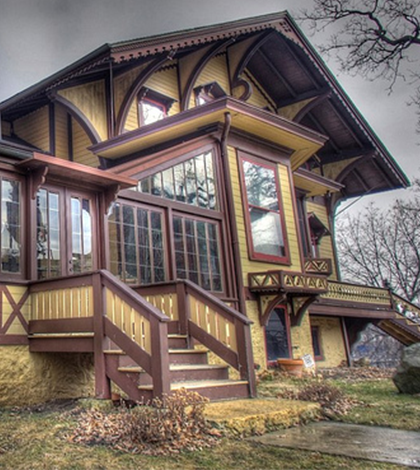 Now known as Tinker Swiss Cottage Museum and Gardens, this beautiful mansion and its grounds are tucked away on Rockford’s west side. Quite a few Rockfordians know it is there, and some of them even know its history. What some of you might not know is that it has the reputation of being haunted!
Now known as Tinker Swiss Cottage Museum and Gardens, this beautiful mansion and its grounds are tucked away on Rockford’s west side. Quite a few Rockfordians know it is there, and some of them even know its history. What some of you might not know is that it has the reputation of being haunted!
 This story could be a screenplay from the golden days of Hollywood, when men like John Wayne and Jimmy Stewart rode the wild frontier and saved their town from the clutches of the lawless bandits.
This story could be a screenplay from the golden days of Hollywood, when men like John Wayne and Jimmy Stewart rode the wild frontier and saved their town from the clutches of the lawless bandits.
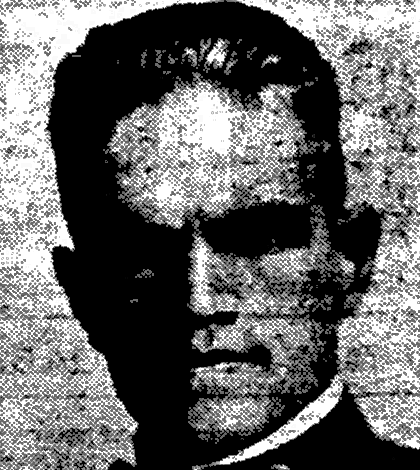 Mr. and Mrs. Damon must have felt a great relief when the armistice was completed and World War I finally seemed to be over. They had two sons serving in the war, Sgt. Clinton Damon, who was a member of Company C 1st Battalion, and Cpl. Grant Damon, who was in Company K 129th Infantry Division. Clinton was in the replacement and training camp in Texas, and Grant was overseas in France fighting on the Western Front.
Mr. and Mrs. Damon must have felt a great relief when the armistice was completed and World War I finally seemed to be over. They had two sons serving in the war, Sgt. Clinton Damon, who was a member of Company C 1st Battalion, and Cpl. Grant Damon, who was in Company K 129th Infantry Division. Clinton was in the replacement and training camp in Texas, and Grant was overseas in France fighting on the Western Front.
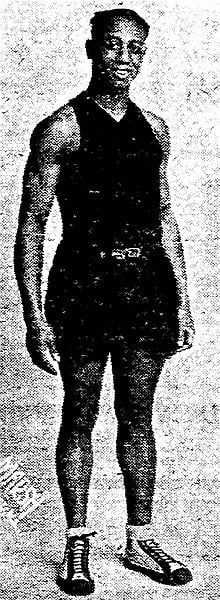 In the 1920s, if you were to ask anyone who the best coach in Rockford was, chances are they would say “Honk Garrett.” Honk was born in Pennsylvania in May 1881. Prior to moving to Rockford, Honk was a coach at Hyde Park High School in Chicago. Garrett was hired by the Rockford High School Association to coach all of the athletes in football, basketball, baseball and track. Some of the best athletes in the Midwest were fortunate enough to be coached by this very talented African-American man. He would lead his football team to the state championship in 1909 and 1910.
In the 1920s, if you were to ask anyone who the best coach in Rockford was, chances are they would say “Honk Garrett.” Honk was born in Pennsylvania in May 1881. Prior to moving to Rockford, Honk was a coach at Hyde Park High School in Chicago. Garrett was hired by the Rockford High School Association to coach all of the athletes in football, basketball, baseball and track. Some of the best athletes in the Midwest were fortunate enough to be coached by this very talented African-American man. He would lead his football team to the state championship in 1909 and 1910.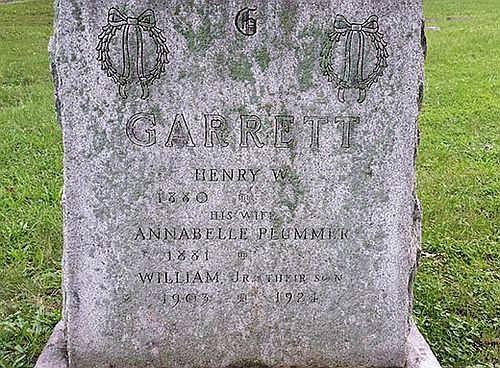

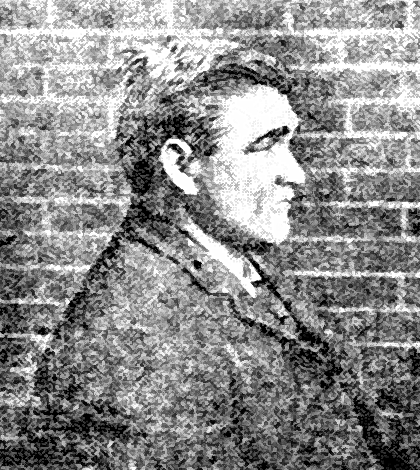 The name of Clinton St. Clair has now been forgotten by most people in Rockford. But that wasn’t always the case. For the better part of 1910, everyone in town knew the name.
The name of Clinton St. Clair has now been forgotten by most people in Rockford. But that wasn’t always the case. For the better part of 1910, everyone in town knew the name.